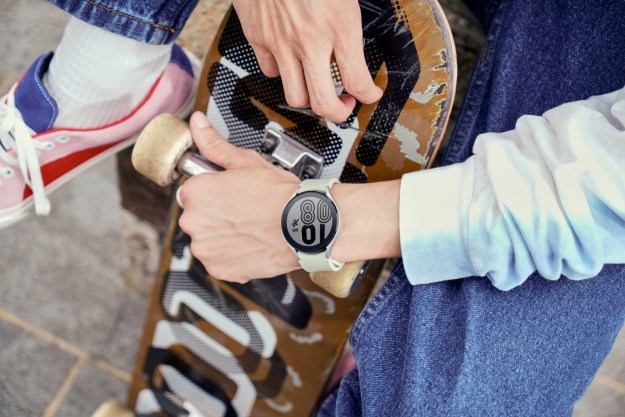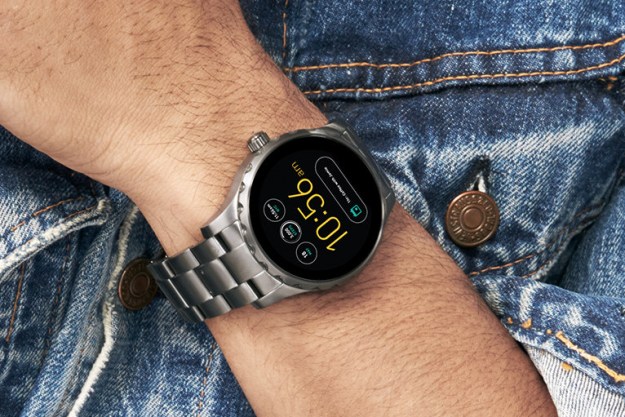Pebble, the Kickstarter darling, has finally broken outside the square aesthetic that’s come to define its crowdfunded smartwatches. It announced the Pebble Time Round in September, a circular smartwatch that Pebble says is the thinnest and lightest of its kind.
Updated on 11-06-2015 by Andy Boxall: Added in final news of the Pebble Time Round’s release
You can buy the Pebble Round in stores
Pebble’s bypassed Kickstarter with the Time Round. After several weeks of pre-orders, the circular watch will go on sale November 8 in retail stores and online. Those who pre-ordered the watch after the September announcement will see their watches ship on the same day.
The Time Round can be purchased through Pebble’s own website, or on Amazon.com, Best Buy, and Target. The latter two will stock the watch in retail stores, as well as online. Prices start at $250.
What’s it like?
The Time Round is quite low in profile — only 7.5mm. It’s incredibly lightweight too, and features premium materials like a “marine-grade” stainless steel 38.5mm chassis and an LED-backlit color e-ink display. And it sports Pebble’s familiar tactile navigational buttons, splash resistance, wireless fast charging, and the vibrating motor and microphone of Pebbles past.
The Time Round’s compactness confers a few drawbacks, though. The Time Round only lasts “up to two days” on battery, considerably shorter than the seven-day life of its square Pebble Time counterparts, and the bezel around the display is quite thick. The Round Time occupies the pricier side of the Pebble spectrum too, at $249.
When Pebble unveiled its first crowdfunded smartwatch in 2013, there wasn’t much choice in wearables. Samsung’s Galaxy Gear, arguably the preeminent smartwatch at the time, was compatible with only with a handful of Samsung smartphones. Others, notably the Qualcomm Toq and Martian Passport, were expensive. All struggled to last more than a few days on on battery.
To say the first-generation Pebble’s battery-boosting e-ink, cross-phone compatibility, and palatable price was paradigm shifting is an understatement. It’s a well-known success story: the Pebble raised a record $10.3 million on Kickstarter and sold millions of units including a metal-clad variant, the Pebble Steel, through traditional retail.
But a lot has changed in two years. Pebble’s hardly been idle — it launched the Pebble Time in February, a refresh of the original Pebble that sports an improved display, thinner exterior, and the redesigned Timeline interface based around chronology — but neither has the market. Apple has the Apple Watch, Samsung has the Gear S2, and Google’s smartwatch platform, Android Wear, now numbers half a dozen hardware partners.
The elephant in the room, of course, is where the Time Round fits in today’s smartwatch market. It’s not the cheapest, and cross-smartphone compatibility, one of Pebble’s longstanding selling points, has since been adopted by Android Wear.
Pebble’s relying on the Time Round’s gorgeous design, the company’s legion of fans, the strength of Pebble development to maintain momentum, but on thing’s for sure: the new Pebble will face intenser market scrutiny than any before it. Just how intense remains to be seen.


